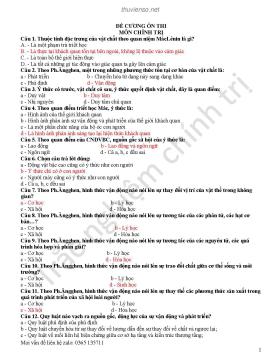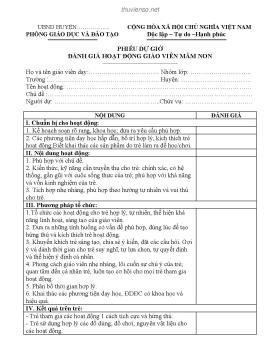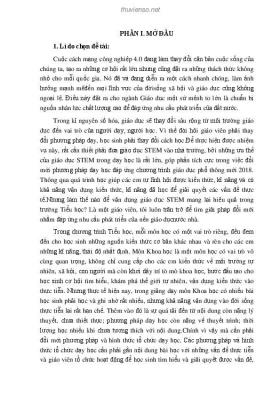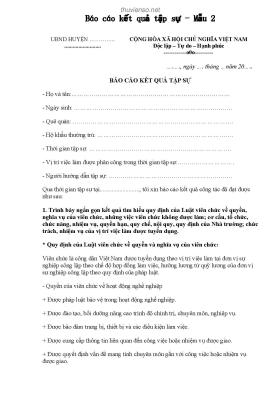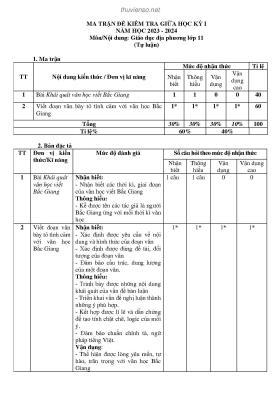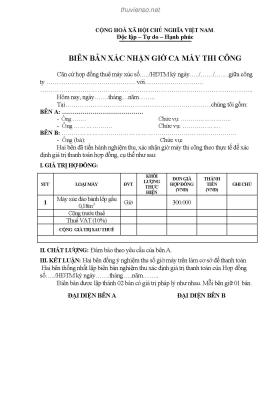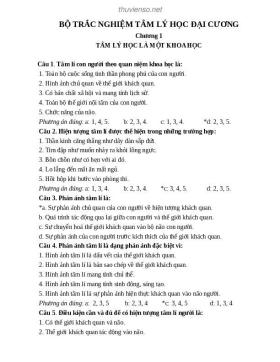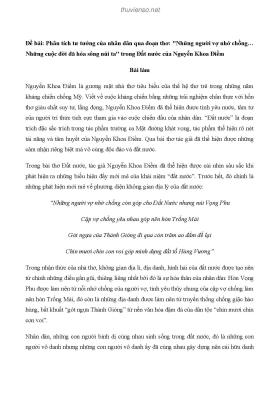
Less05- Identify Design Mechanisms
Thông tin tài liệu:
Nội dung trích xuất từ tài liệu:
Less05- Identify Design Mechanisms Object Oriented Analysis and Design Using the UML Module 5: Identify Design MechanismsRational 1Proprietary and Confidential Objectives: Identify Design Mechanisms Understand the purpose of the Identify Design Mechanisms activity and understand when in the lifecycle it is performed Explain what Design and Implementation Mechanisms are and how they map from Analysis Mechanisms Understand some key mechanisms that will be utilized in the case studyRational 2Proprietary and Confidential Identify Design Mechanisms in Context I dentfiy D esi gn M echani s sm Ar t chiectRational 3Proprietary and Confidential Identify Design Mechanisms Overview Software Architecture Supplementary Design Document Specifications Guidelines Identify Design Analysis Classes Mechanisms Design Model Design ModelRational 4Proprietary and Confidential Identify Design Mechanisms: Steps Categorize clients of analysis mechanisms Document architectural mechanismsRational 5Proprietary and Confidential Identify Design Mechanisms: Steps Categorize clients of analysis mechanisms Document architectural mechanismsRational 6Proprietary and Confidential Identify Design Mechanisms: Steps Pattern A common solution to a common problem in a context Analysis/Design Pattern A solution to a narrowly-scope technical problem A fragment of a solution, or a piece of the puzzle Framework Defines the general approach to solving the problem Skeletal solution, whose details may be analysis/ design patternsRational 7Proprietary and Confidential What Is A Design Pattern A design pattern provides a scheme for refining the subsystems or components of a software system, or the relationships between them. It describes a commonly-recurring structure of communicating components that solves a general design problem with a particular context. - Erich Gamma, Richard Helm, Ralph Johnson and John Vlissides 1994.“Design Patterns – Elements of Reusable Object-Oriented Software”Rational 8Proprietary and Confidential Review: Why Use Analysis Mechanisms? Oh no! I found a group of classes that has persistent data. How am I supposes to design these things if I don’t even know what database we are going to be using? That is why we have a persistence analysis mechanism. We don’t know enough yet, so we can bookmark it and come back to it later Analysis mechanisms are used during analysis to reduce the complexity of analysis, and to improve its consistency by providing designers with a short-hand representation for complex behavior.Rational 9Proprietary and Confidential Categorize Analysis Mechanisms Purpose To refine the information gathered on the analysis mechanisms Steps Identify the clients of each analysis mechanism Identify characteristic profiles for each analysis mechanism Group clients according to their use of characteristic profiles Proceed bottom-up and make an inventory of the implementation mechanisms that you have at your disposalRational 10Proprietary and Confidential Identify Design Mechanisms: Steps Categorize clients of analysis mechanisms Documentation architectural mechanismsRational 11Proprietary and Confidential Design and Implementation Mechanisms Analysis Design Implementation Mechanism Mechanism Mechanism (Conceptual) (Concrete) (Actual) Legacy Data Persistency RDBMS JDBC New Data Persistency OODBMS ObjectStore Distribution Remote Method Java 1.2 from Sun Invocation (RMI) Analysis Design ImplementationRational ...
Tìm kiếm theo từ khóa liên quan:
công nghệ thông tin kỹ thuật lập trình tin học vi tính Identify Design MechanismsTài liệu cùng danh mục:
-
Tìm hiểu về lỗi tràn bộ đệm (Buffer Overflow)
5 trang 364 0 0 -
Giáo trình Cấu trúc dữ liệu và thuật toán trên C++
74 trang 344 0 0 -
Bài giảng Phân tích thiết kế phần mềm: Chương 7 - Trường ĐH Ngoại ngữ - Tin học TP.HCM
16 trang 335 0 0 -
180 trang 274 0 0
-
Giáo trình Lập trình hướng đối tượng: Phần 2
154 trang 253 0 0 -
173 trang 247 2 0
-
Bài giảng Phân tích thiết kế và giải thuật - Chương 2: Kỹ thuật thiết kế giải thuật
80 trang 244 0 0 -
Kiến thức phần cứng máy tính - Sửa chữa nâng cấp và cài đặt máy tính xách tay Tập 2
483 trang 243 3 0 -
Kỹ thuật lập trình trên Visual Basic 2005
148 trang 242 0 0 -
Bài giảng Phân tích thiết kế phần mềm: Chương 6 - Trường ĐH Ngoại ngữ - Tin học TP.HCM
12 trang 240 0 0
Tài liệu mới:
-
Khảo sát tình trạng dinh dưỡng trước mổ ở người bệnh ung thư đại trực tràng
9 trang 21 0 0 -
94 trang 19 0 0
-
Tham vấn Thanh thiếu niên - ĐH Mở Bán công TP Hồ Chí Minh
276 trang 20 0 0 -
Kết hợp luân phiên sóng T và biến thiên nhịp tim trong tiên lượng bệnh nhân suy tim
10 trang 19 0 0 -
Đề thi giữa học kì 1 môn Ngữ văn lớp 9 năm 2024-2025 có đáp án - Trường THCS Nguyễn Trãi, Thanh Khê
14 trang 21 0 0 -
Đánh giá hiệu quả giải pháp phát triển thể chất cho sinh viên Trường Đại học Kiến trúc Hà Nội
8 trang 20 0 0 -
Tỉ lệ và các yếu tố liên quan đoạn chi dưới ở bệnh nhân đái tháo đường có loét chân
11 trang 20 0 0 -
39 trang 19 0 0
-
Đề thi học kì 1 môn Tiếng Anh lớp 6 năm 2024-2025 có đáp án - Trường TH&THCS Quang Trung, Hội An
6 trang 19 1 0 -
Tôm ram lá chanh vừa nhanh vừa dễRất dễ làm, nhanh gọn mà lại ngon. Nhà mình
7 trang 19 0 0


